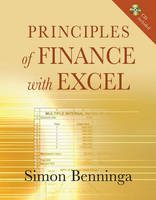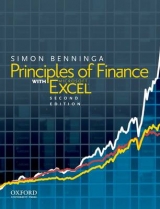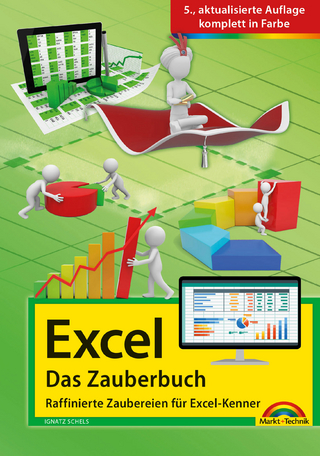
Principles of Finance with Excel
Oxford University Press Inc (Verlag)
978-0-19-530150-2 (ISBN)
- Titel erscheint in neuer Auflage
- Artikel merken
Principles of Finance with Excel is the first finance text that comprehensively integrates Excel into the teaching and practice of finance. Finance is inherently a topic requiring lots of computation and in today's business world this computation is almost wholly carried out in Excel. Despite this, many books rely heavily on hand calculators, and business school students often find that when they leave the academic environment they have to relearn both finance and Excel. The Excel-based approach of Principles of Finance with Excel gives better tools to the instructor and the student and integrates the educational message with the most useful financial tool available. There are no financial calculator examples in Principles of Finance with Excel, just Excel. The resulting message is clear: The Practice of Finance goes hand-in-hand with Excel. As every Excel user knows, a spreadsheet is not just a "computational tool", a slightly more sophisticated twist on the calculator. Using a spreadsheet gives new and deeper insights into financial decision making.
The ability to combine graphics with computation, the powerful functions incorporated into the spreadsheet, and the ease with which sensitivity analysis can be done-all these give potent insights into financial problems.
Simon Benninga is professor of finance at the Wharton School of the University of Pennsylvania and at Tel Aviv University. He is the author of numerous academic articles and three previous books. His books on financial modeling and valuation are now standards in the field of finance and have been translated into Japanese, Chinese, Polish, and Italian.
Preface; SECTION 1: INTRODUCTORY CHAPTERS; 1. Introduction to Finance; 2. Business Organization and Taxes; 3. Basic Accounting Concepts; 4. Cash Management; SECTION 2: CAPITAL BUDGETING AND VALUATION; 5. Time Value of Money; 6. What does it cost?; 7. Basics of Capital Budgeting; 8. More Issues in Capital Budgeting; 9. The Weighted Average Cost of Capital (WACC); 10. Using Financial Planning Models for Valuation; SECTION 3: PORTFOLIO ANALYSIS AND THE CAPITAL ASSET PRICING MODEL; 11. What is Risk?; 12. An Introduction to Portfolio Statistics; 13. Portfolio Returns and the Efficient Frontier; 14. The Capital Asset Pricing Model (CAPM) and the Security Market Line (SML); 15. Using the SML to Measure Performance; 16. Using the SML for Cost of Capital Calculations; SECTION 4: VALUING SECURITIES; 17. Market Efficiency; 18. Bond Valuation; 19. Share Valuation; SECTION 5: CAPITAL STRUCTURE AND DIVIDEND POLICY; 20. Capital Structure and the Value of the Firm-Theory; 21. Capital Structure and the Value of the Firm-Practical Implications; 22. Dividend Policy; SECTION 6: OPTIONS AND OPTION VALUATION; 23. Introduction to Options; 24. Properties of Option Prices; 25. Valuing Options-The Black-Scholes Formula; 26. Valuing Options-The Binomial Model; SECTION 7: BACKGROUND TO EXCEL; 27. Starting Off in Excel; 28. Graphing in Excel; 29. Common Excel Functions; 30. Using Data Tables; 31. Dates in Excel; 32. Goal Seek and Solver; 33. Data Manipulation in Excel; 34. Word and Excel
| Erscheint lt. Verlag | 16.2.2006 |
|---|---|
| Zusatzinfo | Illustrations |
| Verlagsort | New York |
| Sprache | englisch |
| Maße | 188 x 234 mm |
| Gewicht | 1605 g |
| Themenwelt | Informatik ► Office Programme ► Excel |
| Wirtschaft ► Betriebswirtschaft / Management ► Finanzierung | |
| ISBN-10 | 0-19-530150-1 / 0195301501 |
| ISBN-13 | 978-0-19-530150-2 / 9780195301502 |
| Zustand | Neuware |
| Informationen gemäß Produktsicherheitsverordnung (GPSR) | |
| Haben Sie eine Frage zum Produkt? |
aus dem Bereich



